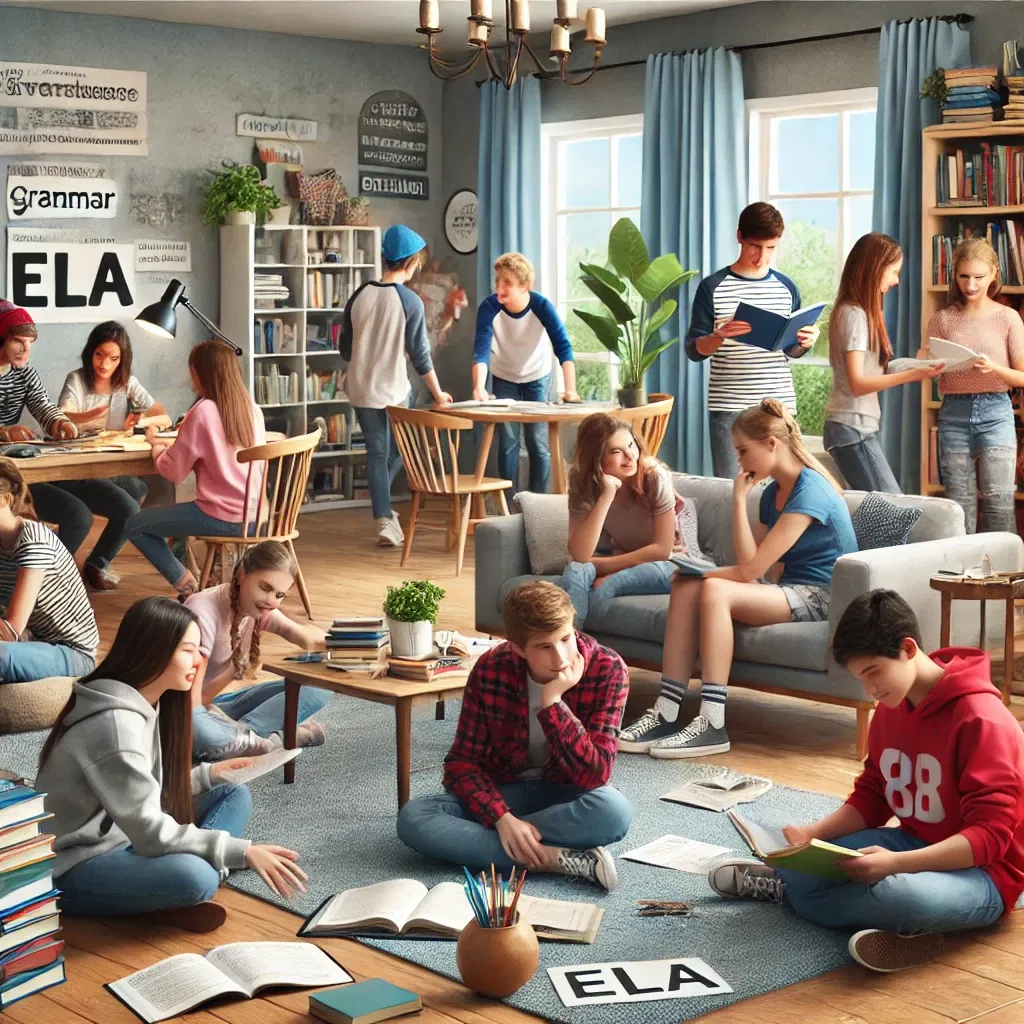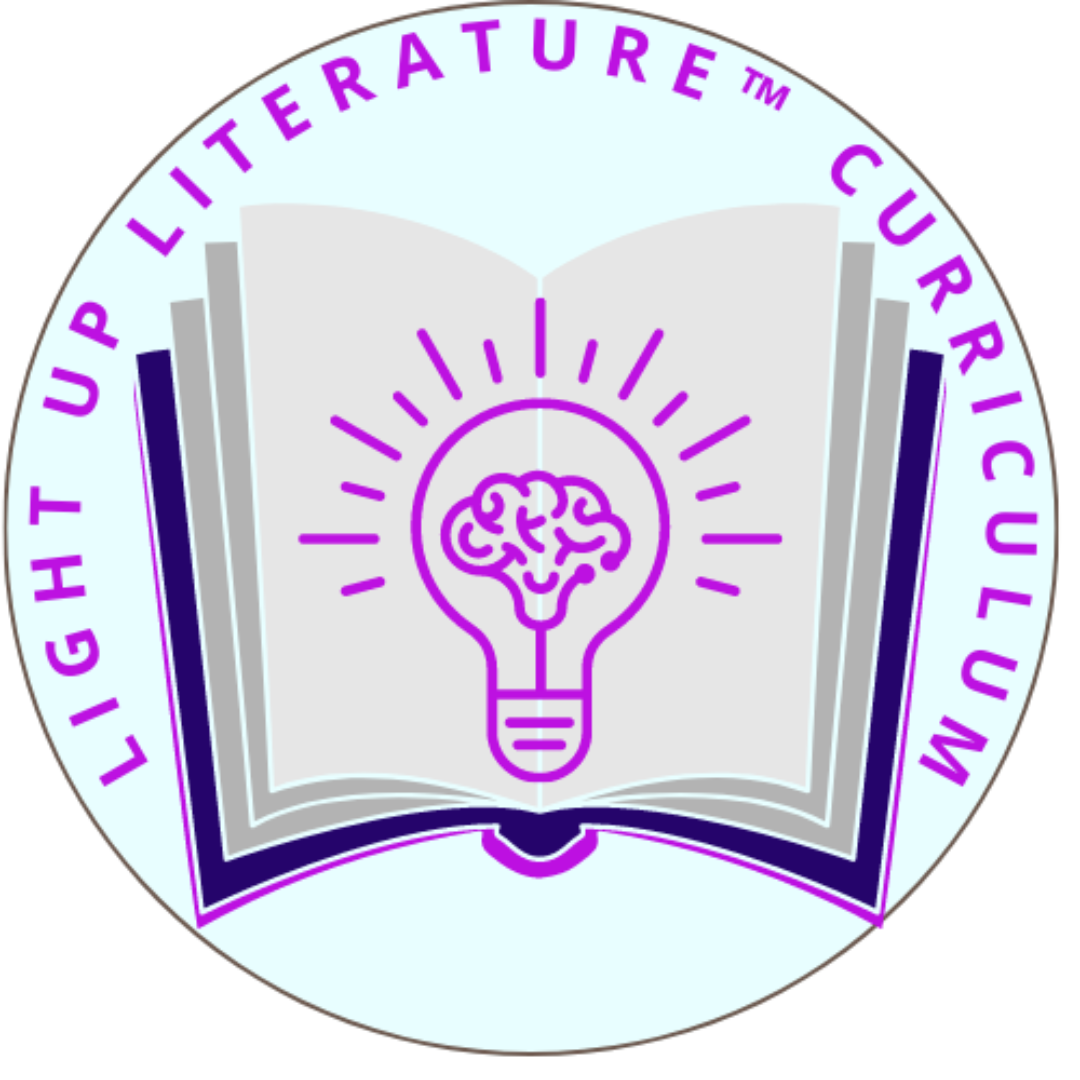Hands-On Learning: Fun Ways to Teach ELA to ADHD Kids

Hands-On Learning: Fun Ways to Teach ELA to ADHD Kids
Hands-On Learning: Fun Ways to Teach ELA to ADHD Kids
Engaging middle school students with ADHD in English Language Arts (ELA) can be a challenge, but hands-on learning makes it easier! Traditional instruction often relies on long periods of reading and writing, which can be difficult for students who thrive on movement and interaction. The key is to transform ELA lessons into active, engaging experiences that keep their attention and help them absorb material in meaningful ways. And the best part? Hands-on learning isn’t just fun—it also enhances higher-level thinking skills, making it a powerhouse strategy for any classroom!
Why Hands-On Learning Works for ADHD Students
ADHD is often associated with difficulties in attention, hyperactivity, and impulsivity. This means that traditional sit-and-listen instruction may not be the most effective way for these students to absorb and retain information. Research shows that hands-on learning provides the stimulation, movement, and engagement that ADHD learners need.
The Science Behind the Strategy
Studies indicate that kinesthetic learning—learning by doing—improves retention and comprehension in students with ADHD. According to research on Classwide Peer Tutoring (CWPT), interactive, student-led activities increase focus, social engagement, and long-term learning outcomes. Another study on authentic learning shows that real-world, hands-on experiences promote critical thinking, problem-solving, and collaboration—all essential components of higher-level thinking (source).
This means that when students act out a scene, manipulate sentence strips, or physically move to show prepositions, they’re not just learning the lesson—they're experiencing it in a way that deepens their understanding and keeps them engaged.
Fun, Interactive Ways to Bring ELA to Life
1. Acting Out Prepositions
Prepositions can be a tricky concept to grasp, but movement-based learning makes them stick! Have students physically act out different prepositions, such as:
Standing behind a chair
Sitting on a desk
Crawling under a table
Jumping over a book
💡 Higher-Level Thinking Bonus: Encouraging students to create their own prepositional movements or combine multiple prepositions into a sequence enhances problem-solving and application skills!
2. Dramatic Storytelling
Instead of just reading a passage aloud, bring stories to life by having students act out scenes from the text. Assign roles and encourage students to use facial expressions and movement to convey emotions. This activity not only makes stories more engaging but also strengthens comprehension and inferencing skills—critical elements of higher-order thinking.
3. Cut-and-Paste Grammar Practice
Traditional grammar worksheets can feel tedious, but hands-on sorting activities add a tactile element that helps ADHD students focus. Try these interactive grammar activities:
Sentence Sorting: Provide a mix of correct and incorrect sentences for students to cut out and sort into the right categories.
Parts of Speech Puzzles: Have students match words to the correct part of speech by physically moving pieces into place.
Fix-the-Sentence Scrambles: Give students a jumbled sentence to cut apart and rearrange into a grammatically correct structure.
💡 Higher-Level Thinking Bonus: Challenge students to explain their choices and justify corrections, reinforcing metacognition and analytical skills!
4. Movement-Based Vocabulary Games
Learning new words doesn’t have to mean staring at flashcards! Try these movement-based games to build vocabulary:
Vocabulary Charades: Write vocabulary words on index cards and have students act them out while their classmates guess the word.
Hopscotch Definitions: Write definitions on one side of the classroom and words on the other. Students must hop or jump to match the correct word with its meaning.
Four Corners Synonyms: Label each corner of the room with different words. Say a vocabulary word, and students move to the corner with its closest synonym.
💡 Higher-Level Thinking Bonus: Incorporating word connections and antonyms challenges students to think beyond memorization and develop deeper linguistic understanding.
5. Create a Story with Props
Provide students with a box of random objects (e.g., a toy car, a stuffed animal, a hat, a flashlight) and challenge them to create a story that incorporates all of the items. This activity enhances creativity and narrative writing skills while allowing students to move around and interact with their peers.
💡 Higher-Level Thinking Bonus: Encourage students to add a plot twist or rewrite their story from a different character’s perspective for advanced critical thinking!
6. Comic Strip Summaries
Instead of writing long summaries, have students create comic strips to illustrate the main events of a story. Drawing helps ADHD students organize their thoughts visually, and the limited space in each panel encourages them to be concise with their summaries.
7. Sensory Writing Stations
Set up different writing stations with sensory materials to help students stay engaged:
Sand Writing: Have students trace vocabulary words or spelling words in a tray of sand.
Playdough Sentences: Students roll out playdough and shape letters or sentences with their hands.
Magnetic Poetry: Use magnetic words to build sentences on a whiteboard or fridge door.
8. Escape Room Challenges
Turn grammar, reading comprehension, or writing lessons into an escape room challenge! Create puzzles that require students to correct sentences, find clues in a passage, or solve riddles related to the lesson. The element of competition and teamwork will keep them engaged and motivated.
9. Reader’s Theater
Give students short scripts to read and perform, emphasizing expression and fluency. Reader’s Theater encourages reluctant readers to participate in a low-pressure environment while making reading fun and interactive.
10. Outdoor ELA Adventures
Take learning outside! Whether it’s writing descriptive nature poems, acting out a scene from a novel in a park, or playing a scavenger hunt with literary elements, outdoor activities keep ADHD students engaged and make learning feel like an adventure.
The Power of Hands-On Learning
The best learning happens when students are active, engaged, and thinking critically—and hands-on ELA lessons make that possible. By turning grammar, reading, and writing into interactive experiences, you enhance ADHD students' ability to focus, retain information, and apply higher-order thinking skills. Plus, these strategies make learning fun, memorable, and meaningful for all students!
Structuring These Activities for a Balanced Week
To help homeschool parents integrate these hands-on strategies effectively, here’s a suggested weekly structure:
Monday: Movement-Based Learning
Begin the week with Acting Out Prepositions and Dramatic Storytelling to get kids engaged with physical movement and expression.
Tuesday: Grammar & Writing Focus
Use Cut-and-Paste Grammar Practice and Sensory Writing Stations to reinforce key concepts in a hands-on way.
Wednesday: Vocabulary Expansion
Play Movement-Based Vocabulary Games like charades or hopscotch definitions to build word knowledge interactively.
Thursday: Creative Expression
Incorporate Create a Story with Props or Comic Strip Summaries to encourage storytelling and visualization.
Friday: Challenge & Review
Wrap up the week with an Escape Room Challenge or Reader’s Theater to test comprehension and build fluency in a fun, low-pressure environment.
Bonus: Outdoor Learning (Any Day!)
Take lessons outside with Outdoor ELA Adventures whenever possible for a change of scenery and added excitement.
By following this structure, homeschool parents can ensure a balanced, engaging ELA curriculum that keeps students moving, thinking, and enjoying the learning process!
So, next time you're planning an ELA lesson, think about how you can get your students moving, collaborating, and creating—and watch as their understanding and enthusiasm soar!
The best learning happens when students are active, engaged, and thinking critically—and hands-on ELA lessons make that possible. By turning grammar, reading, and writing into interactive experiences, you enhance ADHD students' ability to focus, retain information, and apply higher-order thinking skills. Plus, these strategies make learning fun, memorable, and meaningful for all students!





